OTHER A TO Z GUIDES FROM
THE SCARECROW PRESS, INC.
1. The A to Z of Buddhism by Charles S. Prebish, 2001.
2. The A to Z of Catholicism by William J. Collinge, 2001.
3. The A to Z of Hinduism by Bruce M. Sullivan, 2001.
4. The A to Z of Islam by Ludwig W. Adamec, 2002.
5. The A to Z of Slavery & Abolition by Martin A. Klein, 2002.
6. Terrorism: Assassins to Zealots by Sean Kendall Anderson and Stephen Sloan, 2003.
7. The A to Z of the Korean War by Paul M. Edwards, 2005.
8. The A to Z of the Cold War by Joseph Smith and Simon Davis, 2005.
9. The A to Z of the Vietnam War by Edwin E. Moise, 2005.
10. The A to Z of Science Fiction Literature by Brian Stableford, 2005.
11. The A to Z of the Holocaust by Jack R. Fischel, 2005.
12. The A to Z of Washington, D.C. by Robert Benedetto, Jane Donovan, and Kathleen DuVall, 2005.
13. The A to Z of Taoism by Julian F. Pas, 2006.
14. The A to Z of the Renaissance by Charles G. Nauert, 2006.
15. The A to Z of Shinto by Stuart D.B. Picken, 2006.
16. The A to Z of Byzantium by John H. Rosser, 2006.
17. The A to Z of the Civil War by Terry L. Jones, 2006.
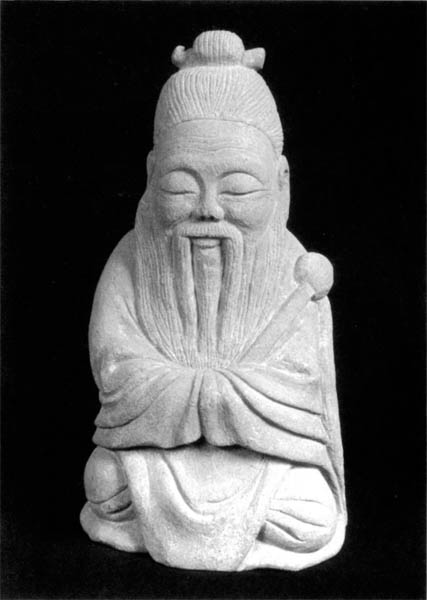
Lao-tzu sculpture (70 cm. high), Indiana limestone, by Saskatoon artist Ed Gibney. Authors collection.
The A to Z of Taoism
Julian F. Pas
The A to Z Guide Series, No. 13

SCARECROW PRESS, INC.
Published in the United States of America
by Scarecrow Press, Inc.
A wholly owned subsidiary of
The Rowman & Littlefield Publishing Group, Inc.
4501 Forbes Boulevard, Suite 200, Lanham, Maryland 20706
www.scarecrowpress.com
PO Box 317
Oxford
OX2 9RU, UK
The A to Z of Taoism is a revised paperback edition of the Historical Dictionary of Taoism, by Julian F. Pas, published by Scarecrow Press in 1998.
Copyright 1998 by Julian F. Pas
All rights reserved. No part of this publication may be reproduced, stored in a retrieval system, or transmitted in any form or by any means, electronic, mechanical, photocopying, recording, or otherwise, without the prior permission of the publisher.
British Library Cataloguing in Publication Information Available
Library of Congress Cataloging-in-Publication Data
Pas, Julian F.
Historical dictionary of Taoism / Julian F. Pas, in cooperation with Man Kam Leung.
p. cm.(Historical dictionaries of religions, philosophies, and movements ; no. 18)
Includes bibliographical references.
1. TaoismHistoryDictionaries. I. Leung, Man Kam. II. Title. III. Series.
BL1923.P37 1998
299.51403dc21
9725780
ISBN 0-8108-5511-9 (pbk. : alk. paper)
 The paper used in this publication meets the minimum requirements of American National Standard for Information SciencesPermanence of Paper for Printed Library Materials, ANSI/NISO Z39.481992. Manufactured in the United States of America.
The paper used in this publication meets the minimum requirements of American National Standard for Information SciencesPermanence of Paper for Printed Library Materials, ANSI/NISO Z39.481992. Manufactured in the United States of America.
To the many generations of my students of Taoism at the University of Saskatchewan and other friends in the Tao who helped me in my search for the Way.
Contents
Preface
Taoism is a very complex cultural tradition, which had a deep influence on Chinese ways of thinking and spiritual practice. In the West, Europe and North America, Taoism is best known through translations of the philosophical writings of the Tao Te Ching (abbreviated TTC) and Chuang-tzu (not always properly understood) and through some of its side products, the martial arts, Chinese medicine, and many of its pseudo products, the growing number of books titled The Tao of... authors of which are more motivated by the Tao of profitmaking than by the real Tao.
Taoism deserves to be better known in the West. But it must be understood the way it really was or is, not as it is imagined to be. In this volume, I have incorporated mostly secondary information, either from Chinese or western language sources. If one would attempt to walk the Way alone, and find all ones data in primary sources, one lifetime would not be long enough. And there is some urgency in producing a volume on Taoism that is both informative and attractive.
What attracts me the most to Taoism is its philosophy. Taoism as a religion is also colorful, sometimes mysterious, sometimes weird, sometimes senseless. As a religion, it is fascinating to study, but I would not incorporate it into my own life. I do not believe in the stories about immortals or Taoist authors who claim that physical immortality is within human reach. That, to me, is an illusion. But in the philosophical writings, I find a rich treasure-house of wisdom that is meaningful in my own life. The TTC and the Chuang-tzu are springs that connect underground with the sources of a perennial philosophy. And they are free from religious illusion, appealing to the universal human mind, and promote the human capacity for self-transcendence.
Having expressed my own views about Taoism, it is, however, necessary to explain the rationale of this volume, since it includes many items that are part of the Taoist religion. Readers have the right to be informed, and in providing information about many aspects of the Taoist religion, I have tried to be objective and historically correct.
In recent decennia, Taoism has received tremendous scholarly attention, both in the East (China and Japan) and in the West (Europe and North America). Anna Seidels Chronicle of Taoist Studies in the West (CEA, 5, 198990) and Franciscus Verellens state-of-the-art report (JAS, 54, 1995: 322346) are excellent indicators of how much Taoism has gained. Yet, deplorably, there exists as yet no in-depth general survey of the Taoist tradition in a western language. H. Welchs Parting of the Way is out of date, and Isabelle Robinets Histoire du Taosme, although excellent from a historical viewpoint, does not sufficiently cover the Taoist philosophical tradition and also omits the issue of Taoism in modern times.
The present volume attempts to temporarily fill the gap. In writing the nearly 275 entries, I relied heavily on the expertise of past and present Taoist scholars, sometimes on the work of Chinese scholars, especially on dictionaries and encyclopedias of Taoism published in recent years. I dare not compare this present modest volume with the huge publications in China and Japan. An example is Encyclopedia of Chinese Taoism (Zhonghua Daojiao da cidian), published in Beijing in 1995, which consists of 2,207 pages in small print and is extremely detailedobviously meant for Chinese readership. It lists a few hundred contributors. A Japanese volume titled Dictionary of Taoism (Dokyo jiten), published in Tokyo in 1994, has 1,141 entries, written by 132 contributors.
By contrast, a volume put together by one person, with the assistance of one other, cannot pretend to be a final product. It is, in fact, meant to be a starting point. I hope other scholars of Taoism will respond by sending me their comments and criticisms in order to launch a second edition. I am certain that more entries could be introduced, and that new bibliographic data can be added. I also wish that nonspecialists will give me some feedback: which items they would like to see discussed in greater detail, etc. Indeed, this volume is written especially for nonspecialist, educated readers to use as a reference work. I realize that some entries should be expanded, especially those that discuss aspects of Taoism that are relevant to Westerners today. With the readers support and suggestions, the second edition should come closer to the ideal reference work.
Next page

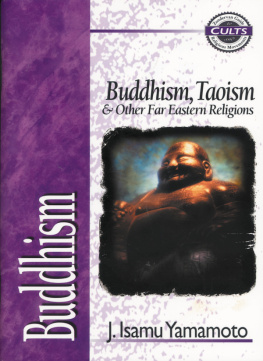
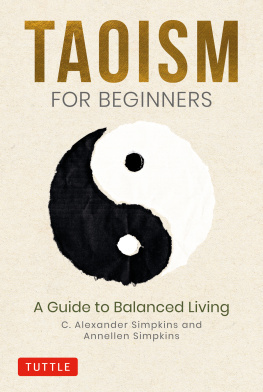
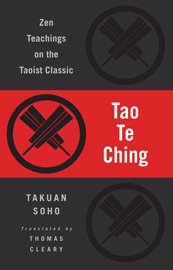
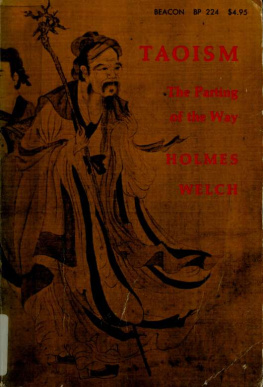

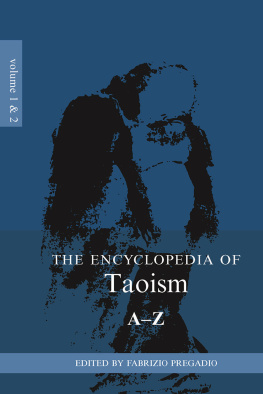
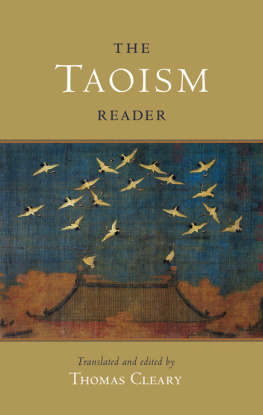
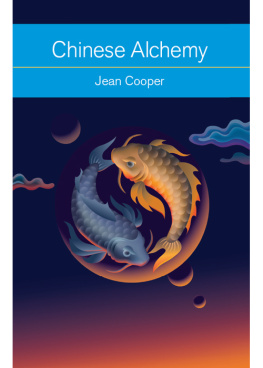
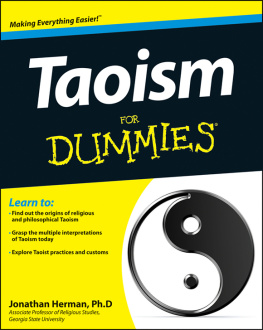



 The paper used in this publication meets the minimum requirements of American National Standard for Information SciencesPermanence of Paper for Printed Library Materials, ANSI/NISO Z39.481992. Manufactured in the United States of America.
The paper used in this publication meets the minimum requirements of American National Standard for Information SciencesPermanence of Paper for Printed Library Materials, ANSI/NISO Z39.481992. Manufactured in the United States of America.